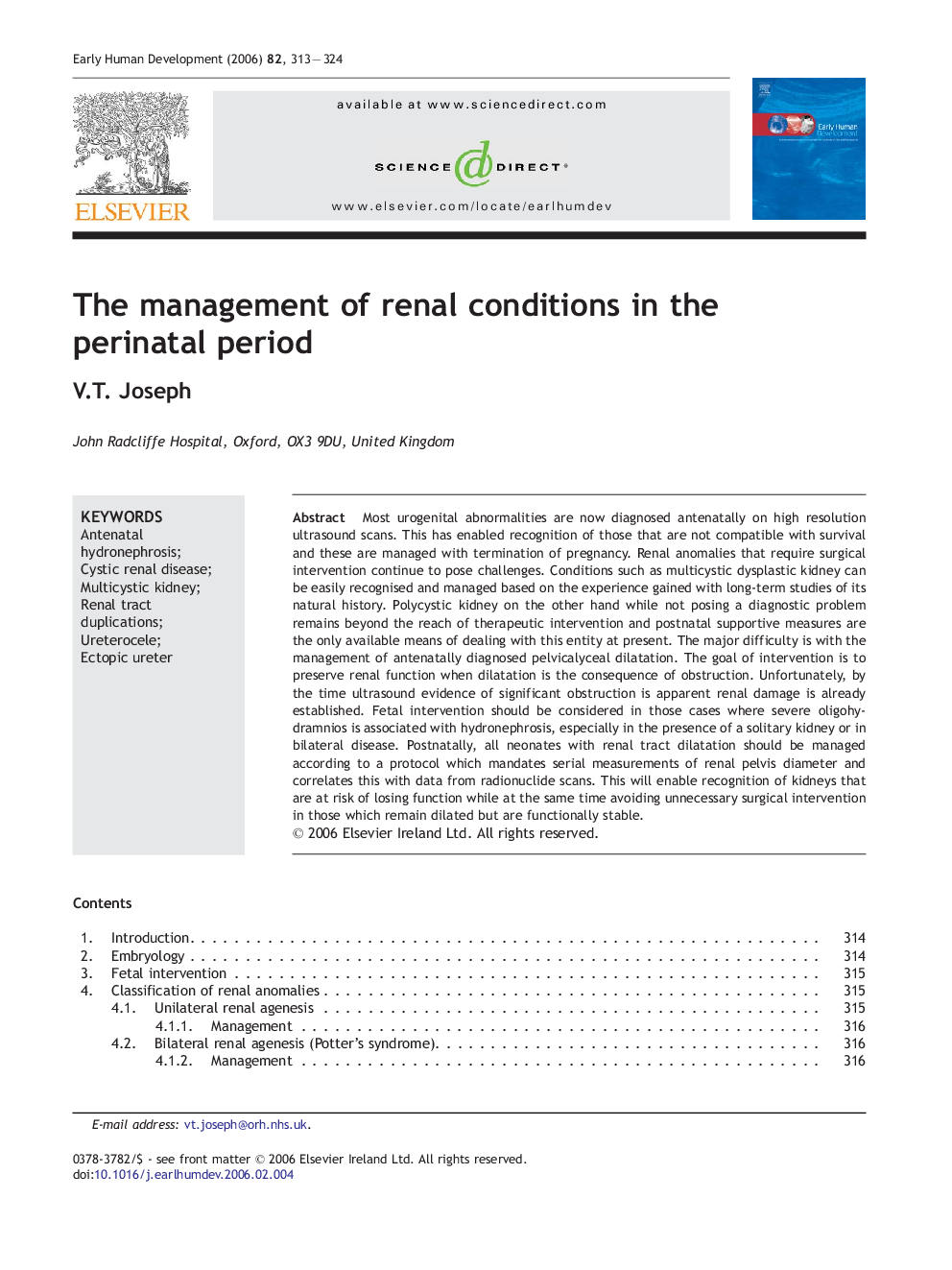| Article ID | Journal | Published Year | Pages | File Type |
|---|---|---|---|---|
| 3918401 | Early Human Development | 2006 | 12 Pages |
Most urogenital abnormalities are now diagnosed antenatally on high resolution ultrasound scans. This has enabled recognition of those that are not compatible with survival and these are managed with termination of pregnancy. Renal anomalies that require surgical intervention continue to pose challenges. Conditions such as multicystic dysplastic kidney can be easily recognised and managed based on the experience gained with long-term studies of its natural history. Polycystic kidney on the other hand while not posing a diagnostic problem remains beyond the reach of therapeutic intervention and postnatal supportive measures are the only available means of dealing with this entity at present. The major difficulty is with the management of antenatally diagnosed pelvicalyceal dilatation. The goal of intervention is to preserve renal function when dilatation is the consequence of obstruction. Unfortunately, by the time ultrasound evidence of significant obstruction is apparent renal damage is already established. Fetal intervention should be considered in those cases where severe oligohydramnios is associated with hydronephrosis, especially in the presence of a solitary kidney or in bilateral disease. Postnatally, all neonates with renal tract dilatation should be managed according to a protocol which mandates serial measurements of renal pelvis diameter and correlates this with data from radionuclide scans. This will enable recognition of kidneys that are at risk of losing function while at the same time avoiding unnecessary surgical intervention in those which remain dilated but are functionally stable.
